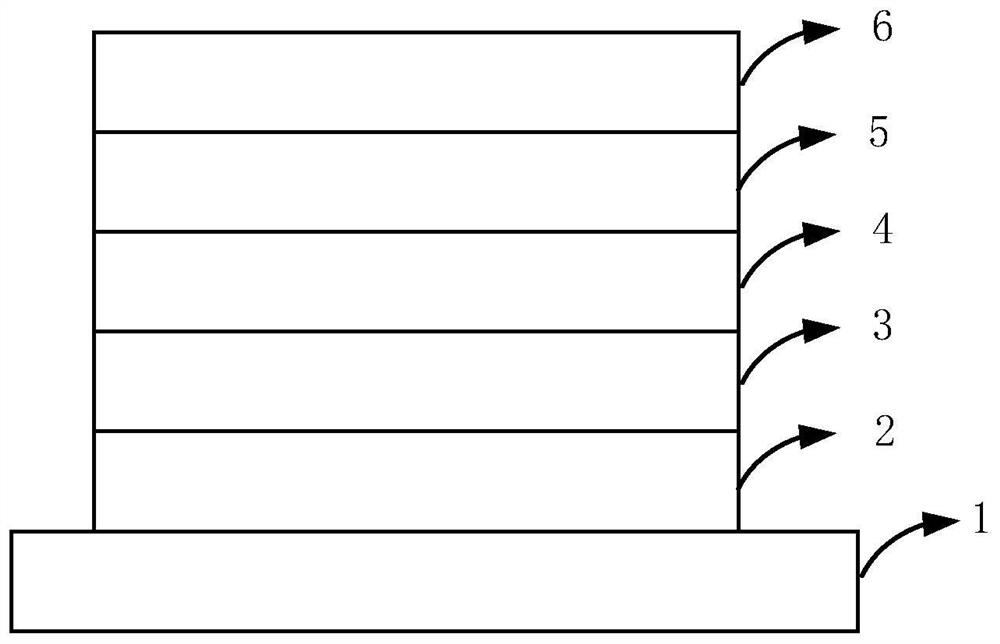Zinc oxide nanomaterial, preparation method thereof, and light-emitting device
A technology of zinc oxide nanometer and zinc oxide, which is applied in the direction of semiconductor devices, electrical components, coatings, etc., can solve the problems of p-type zinc oxide synthesis conditions are harsh, high cost, etc., and achieve large-scale and large-scale production, low cost, The effect of simple process
- Summary
- Abstract
- Description
- Claims
- Application Information
AI Technical Summary
Problems solved by technology
Method used
Image
Examples
preparation example Construction
[0019] The embodiment of the present invention provides a preparation method corresponding to the zinc oxide nanomaterial in the previous embodiment. The preparation method comprises the steps of:
[0020] Step S11: providing a mixed solution in which zinc precursor salt, gallium source and nitrogen source are dissolved.
[0021] In an embodiment of the present invention, the zinc precursor salt is a soluble inorganic zinc salt or a soluble organic zinc salt, including but not limited to at least one of zinc acetate, zinc nitrate, zinc chloride, zinc sulfate, and zinc acetate dihydrate; gallium The source is specifically gallium salt, including but not limited to at least one of gallium nitrate and gallium chloride; the nitrogen source is specifically ammonium salt, including but not limited to at least one of urea, ammonium sulfate, ammonium nitrate and ammonium chloride. Specifically, the zinc precursor salt, the gallium source and the nitrogen source can be dissolved by an...
Embodiment 1
[0034] Embodiment 1: The following uses zinc chloride, gallium chloride, ammonium chloride, methanol, and sodium hydroxide as examples for detailed introduction.
[0035] First, add appropriate amount of zinc chloride, gallium chloride and ammonium chloride to 50ml of methanol to form a solution with a total concentration of 0.5mol / L, wherein the ratio of the molar weight of zinc to the sum of the molar weight of gallium ions and nitrogen ions is 1 : 0.005, the molar ratio of gallium ions to nitrogen ions is 1:3, dissolved under constant temperature stirring at 60°C. Then add dropwise the lye that sodium hydroxide is dissolved in 10ml methanol, wherein, molar ratio OH-: M x+ =2:1(M x+ refers to zinc ions, gallium ions and nitrogen ions), pH = 12, and continued to stir at 60° C. for 4 h to obtain a homogeneous transparent solution. Subsequently, after the solution was cooled, the treated ITO was spin-coated with a homogenizer and annealed at 320°C.
Embodiment 2
[0036] Embodiment 2: The following takes zinc nitrate, gallium nitrate, urea, propanol, and ethanolamine as examples to introduce in detail.
[0037] First, appropriate amount of zinc nitrate, gallium nitrate and urea are added to 50ml of propanol to form a solution with a total concentration of 0.5mol / L, wherein the ratio of the molar amount of zinc to the sum of the molar amounts of gallium ions and nitrogen ions is 1:0.005, The molar ratio of gallium ions to nitrogen ions is 1:3, and they are stirred and dissolved at a constant temperature of 80°C. Then add ethanolamine dropwise and dissolve in 10ml propanol solution (molar ratio ethanolamine:M x+ =2:1), pH=12. Stirring was continued at 80 °C for 2 h to obtain a homogeneous clear solution. Subsequently, after the solution was cooled, the treated ITO was spin-coated with a homogenizer and annealed at 320°C.
PUM
| Property | Measurement | Unit |
|---|---|---|
| thickness | aaaaa | aaaaa |
| thickness | aaaaa | aaaaa |
Abstract
Description
Claims
Application Information
 Login to View More
Login to View More - R&D
- Intellectual Property
- Life Sciences
- Materials
- Tech Scout
- Unparalleled Data Quality
- Higher Quality Content
- 60% Fewer Hallucinations
Browse by: Latest US Patents, China's latest patents, Technical Efficacy Thesaurus, Application Domain, Technology Topic, Popular Technical Reports.
© 2025 PatSnap. All rights reserved.Legal|Privacy policy|Modern Slavery Act Transparency Statement|Sitemap|About US| Contact US: help@patsnap.com

